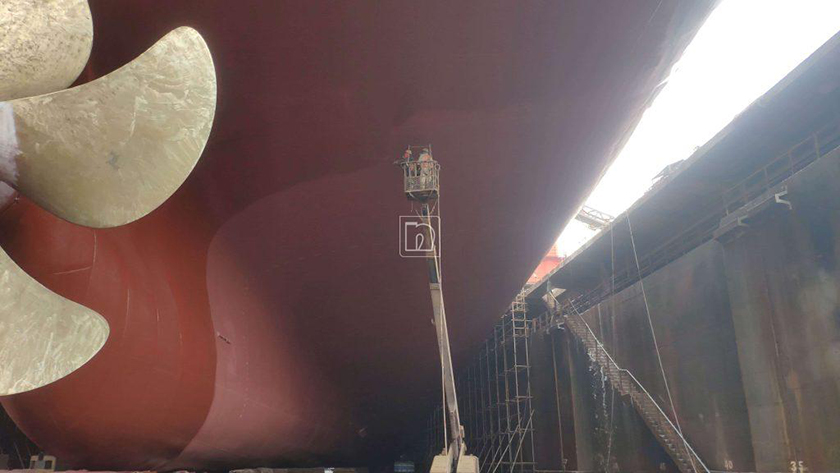More news
- Asian paint regulatory round up – Indonesian exterior paint still uses lead, warns W...
- Nigeria’s paint industry navigates regulatory changes and economic challenges amid p...
- Focus on the global coatings market: Global coatings market outlook
- Innovative coatings mitigate effects of deepening climate change
- Ask Joe Powder – October 2024

Marine coatings leader Nippon Paint Marine’s antifouling products A-LF-Sea and FASTAR have delivered up to 8% fuel and emissions savings for Taiwanese shipping company Wan Hai Lines Ltd.
Reducing fuel consumption and emissions is a key priority for Wan Hai and the wider container shipping sector, as it looks to drive increased operational efficiencies to comply with more stringent industry regulations including CII, EEXI and mitigate shipping’s price on carbon following its inclusion in the EU ETS, as well as reaching future targets for global GHG emissions reduction.
Wan Hai has worked with Nippon Paint Marine for seven years, beginning with the application of the high-end antifouling coating A-LF-Sea to 20 vessels within its fleet. Performance analysis conducted in 2019 showed that the product delivered up to 8% fuel and emissions reduction compared to conventional coatings. A-LF-Sea is a super low-friction coating system that uses Nippon Paint Marine’s patented Hydrogel water-trapping technology, resulting in a smoother hull which reduces a vessel’s hydrodynamic drag. This results in lower fuel consumption – as less power is needed to maintain the same speed – reducing the cost of operating the vessel, as well as emissions.
READ MORE:
Number one in Asia: PPCJ speaks to Nippon Paint’s Gladys Goh
In 2021, Wan Hai began applying Nippon Paint Marine’s next-generation antifouling coating FASTAR to generate further fuel efficiencies and help contribute towards CII ratings for its fleet. FASTAR has now been applied to 10 vessels across Wan Hai’s global fleet. The vessels are currently undergoing performance analysis to determine options for generating additional fuel and emissions saving benefits going forward.
FASTAR is Nippon Paint Marine’s 4th generation antifouling system, with self-polishing and self-smoothing capabilities. FASTAR builds upon the company’s patented Hydrogel water-trapping technology, using nano-binder technology to deliver precise, predictable antifouling performance, reducing fuel consumption and emissions, as well as improving drydock efficiency. Wan Hai is now also considering extending this partnership to explore the use of Nippon Paint Marine’s AQUATERRAS solution, the world’s first completely biocide-free and proven self-polishing underwater foul-resistant paint, which can reduce fuel consumption by up to 10%.
“We have been very impressed with the performance of both A-LF-Sea and FASTAR. Both coatings have enabled us to achieve significant fuel and emissions savings, which aligns with Wan Hai’s corporate and sustainability goals to comply with environmental regulations as well as supporting the industry in meeting global decarbonisation targets,” said, Wan Hai Lines Ltd.
“Improving efficiency across our entire fleet is critical to driving more sustainable, commercial and competitive operations and Nippon Paint Marine’s coating technology has played an integral role in enabling us to achieve this.”
“Helping our customers meet the challenge of accelerating the path to decarbonisation and wider sustainability is a key focus for us. We are proud to have enabled Wan Hai to achieve fuel savings of up to 8% that have a significant and positive impact on their environmental footprint and bottom line,” said Adrian Hwang, Deputy General Manager at Nippon Paint Marine. “Nippon Paint Marine is dedicated to continue to develop advanced, innovative, high performance marine coatings that enable our customers to maximise operational efficiencies, reduce fuel consumption and associated costs, while also achieving their sustainability goals.”
Nippon Paint Marine has applied products using its Hydrogel low-friction antifouling coatings to more than 4,000 vessels to date, reducing fuel costs and emissions by up to 8% compared to other makers’ top-of-the-range silyl-acrylate SPC systems without Hydrogel.







